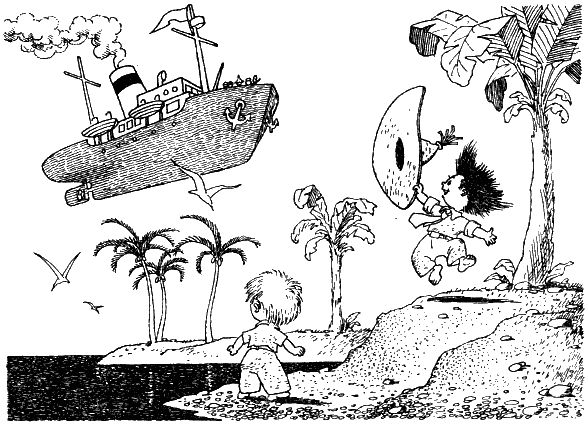Nikolai Nikolaevich Nosov in Russian literature is a special figure. It, unlike many, becomes the farther, the more. He is one of the few writers whose books he really read (voluntarily read!), And he recalls with warmth the entire population of the country. Moreover - although the Soviet classics almost all remained in the past, and have not been reprinted for a long time, the demand for Nosov’s books not only has not fallen one iota, but is constantly growing.
De facto, his books have become a symbol of successful literature.
Suffice it to recall the loud departure of Parkhomenko and Gornostaeva from the ABC-Atticus publishing group, which was explained ideologically by differences with the publisher’s leadership, which “is not ready to release anything other than the 58th edition of Dunno on the Moon.”
But at the same time, almost nothing is known about the author himself.
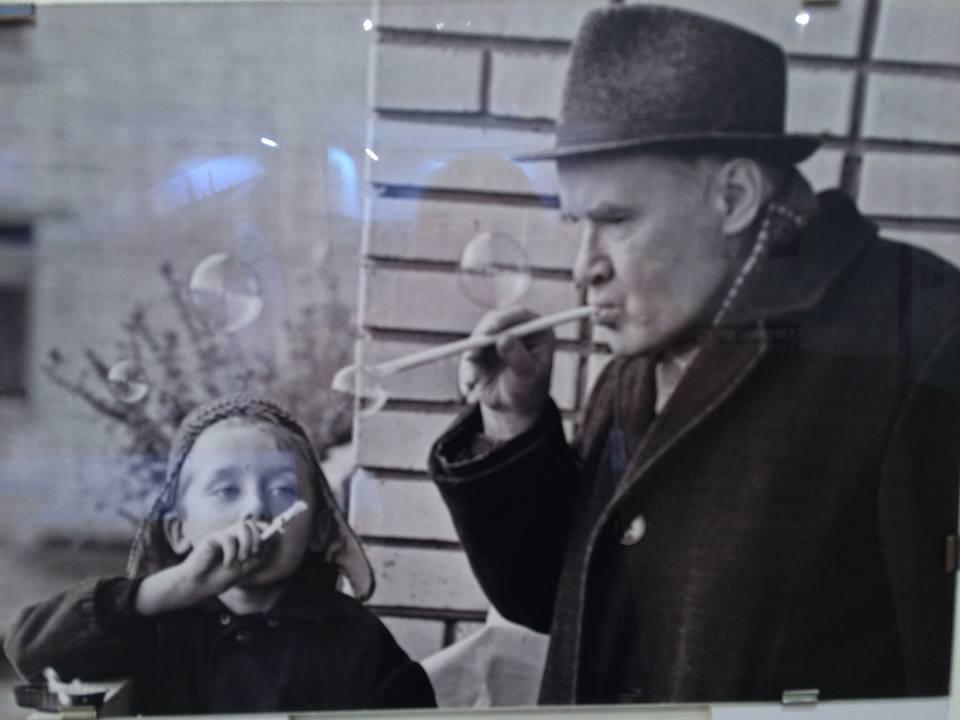
N. Nosov with his grandson Igor
His biography is really unlike an adventurous novel - he was born in Kiev in the family of a pop artist, in his youth he changed many works, then he graduated from the Institute of Cinematography, left the cinema for literature and wrote all his life.
But some circumstances of this trivial fate really amaze the imagination. All of you probably remember the famous stories of Nosov from the conditional cycle "Once we are with Mishka." Yes, the same ones - how they cooked porridge, turned up hemp at night, drove a puppy in a suitcase, etc. Now, please answer the question - when does the action of these stories take place? In what years does this all happen?
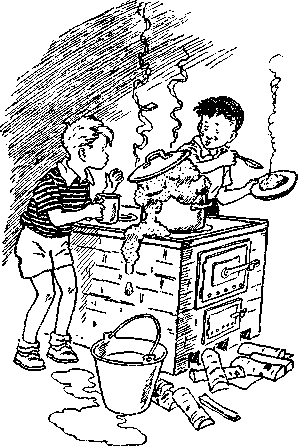
Usually the range of opinions is quite large - from the thirties to the thawing sixties. There are a lot of answers, all except correct ones.
And the truth is that Nosov began writing shortly before the war (the first publication was 1938), but the most famous, brightest and most memorable were written in the worst years. From the forty-first to forty-fifth. Then the professional filmmaker Nosov shot documentaries for the front (and for the educational film “Planetary Transmissions in Tanks”, received his first award - the Order of the Red Star), and in his spare time, for the soul, he wrote the very stories “Mishkina Kasha”, “ Buddy ”,“ Ogorodniki ”... The last story of this cycle,“ Tut-tuk-tuk ”, was written at the end of 1944, and in 1945 the first book was published by the novice writer - a collection of short stories“ Tut-tuk-tuk ”.
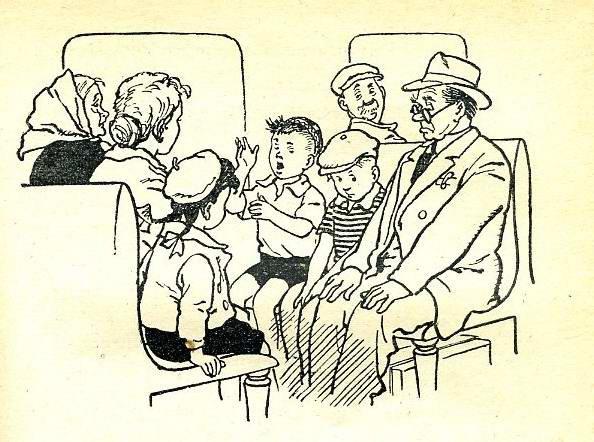
The most important thing is that when you know the answer, annoyance immediately wakes up - well, well, nevertheless it is clear! All young heroes have only mothers, where dads have gone - it is not clear. Yes, and in general male characters for the whole cycle - quite old, apparently, "Uncle Fedya" in the train, who was all outraged by the recitation of verses, and counselor Vitya, apparently, was a high school student. Ascetic life to the limit, jam with bread as a treat ...
But still there is no war. Not a word, not a hint, not a spirit. I think no need to explain why. Because it was written for children. For children for whom life has already measured so much that God forbid we find out. Such is the movie Life is Beautiful, only in reality.

All clear. And yet - how? How could he do this? There can only be one answer - this is what distinguishes a real children's writer from a fake one.
With the order, by the way, everything was also quite interesting.
In his youth, Nosov was seriously fond of photography, and then cinema, so at the age of 19 he entered the Kiev Art Institute, from which he transferred to the Moscow Institute of Cinematography, which he graduated in 1932 in two faculties at once: directing and camera.
No, he did not become a great filmmaker, he did not make feature films at all. In fact, Nosov was a real geek. All his life he was very fond of technology, which, in fact, is very noticeable in his books. Remember how selflessly he describes the device of any mechanism - be it a home-made incubator for hatching chickens, or a car on soda water with syrup?
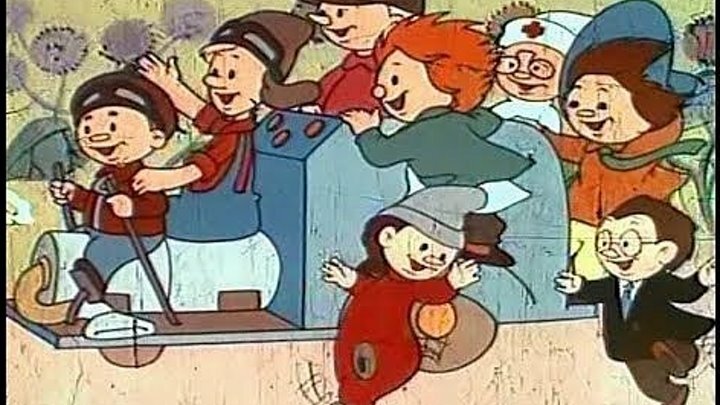
Therefore, the director Nosov shot exclusively what he loved - popular science and educational films, and he did this for 20 years, from 1932 to 1952. In 1952, already a well-known writer, he received the Stalin Prize for the novel “Vitya Maleev at School and at Home” and only after that finally decided to leave for “literary bread”
His love of technology helped him more than once during the war, when he worked at the Voentechfilm studio, where he shot training films for tank crews. After his death, the widow, Tatyana Fyodorovna Nosova-Seredina, in the book “The Life and Work of Nikolai Nosov” told a funny episode.
The future writer made a film about the structure and operation of the English tank Churchill, delivered to the USSR from England. There was a big problem - the sample sent to the film studio did not want to turn around on the spot, but did it exclusively along a large arc. The shooting was disrupted, the technicians could not do anything, and then Nosov asked to enter the tank to observe the driver’s actions. The military, of course, looked at the civilian director as an idiot, but let them in - it seems to be the main one on the set.

Members of the Soviet military mission in tests of the Churchill IV tank. England, spring 1942
And then ... Next was this:
“Before that, Nikolai Nikolaevich worked on a training film about tractors and was generally well versed in cars, but the tanker, of course, did not know this. Cursing how much in vain the foreign equipment, he turned on the engine and again made ridiculous curves with the tank, and as for Nikolay Nikolayevich, he focused on the levers, again and again asked the tanker to turn the tank one way, then the other, until finally did not find an error. When the tank for the first time made a very graceful turn around its axis, the studio workers who watched its work applauded. The driver was very pleased, but also embarrassed, he apologized to Nosov and did not want to believe that he knew the technique simply as an amateur. ”
Soon the film "Planetary Transmissions in Tanks" was released, where Churchill wrote pirouettes under Beethoven's Moonlight Sonata. And then…
Then an interesting document appeared - Decree of the Presidium of the Supreme Soviet of the USSR on awarding orders and medals. There, under the heading “For the exemplary performance of the combat missions of the Command for providing the tank and mechanized forces of the army and the successes achieved in training tank personnel and staffing the armored and mechanized forces”, the names of lieutenant generals, captains and other “foremen and major” were listed.
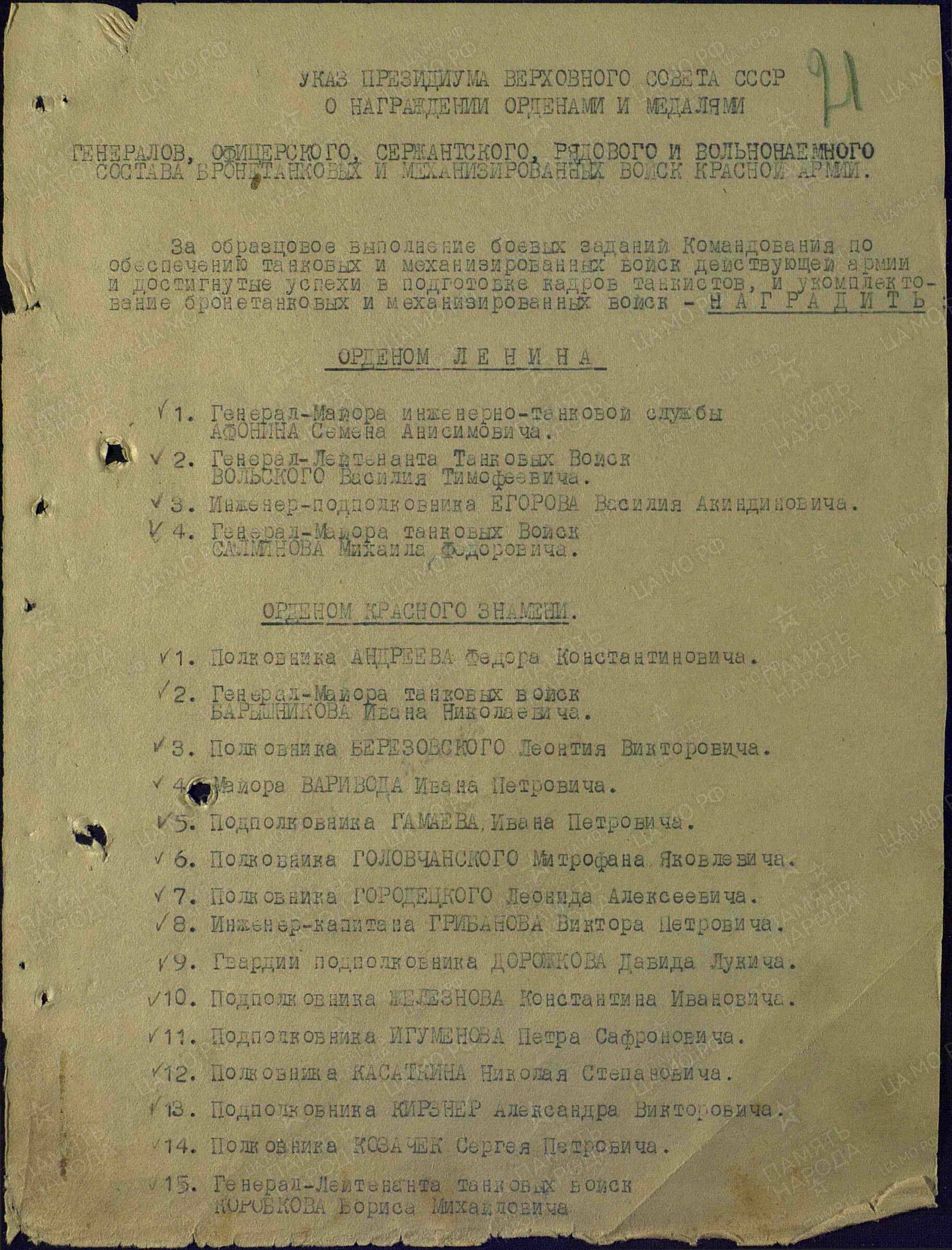
And only one surname - without a military rank. Just Nosov Nikolai Nikolaevich.

Just Nosov Nikolai Nikolaevich was awarded the Order of the Red Star.
For what? This was written in the submission:
"T. Nosov N.N. has been working as a director at the Voentechfilm studio since 1932.
During his work, Comrade Nosov, showing high skill in his work, moved into the ranks of the best directors in the studio.
Comrade Nosov, author and director of the educational film Planetary Transmissions in Tanks. This film is the best released by the studio in 1943. The film was adopted outside the existing quality assessments by the Committee for Cinematography Affairs under the USSR SNK.
Comrade Nosov in his work on this film showed examples of genuine labor heroism, did not leave production for several days, trying to do his job as soon as possible. Even being completely sick and barely keeping on his feet, Comrade Nosov did not stop working on the film. He could not be forced to leave home. ”

According to the stories, the writer was most proud of this award. More than the Order of the Red Banner of Labor received for literary activity, more than the Stalin or State Prizes.
But by the way, I always suspected something like that. There is something unfamiliar in Dunno, armored, frontal and fearless. And the clutches burns at once.
But there are more complicated puzzles in Nosov’s work, which literary scholars have been fiercely arguing about until now. For example, Nosov’s peculiar “reverse evolution” usually confuses everyone.
In the most ideologically loaded Stalin years, Nikolai Nikolayevich wrote directly defiantly apolitical books, in my opinion, even a pioneer organization was mentioned there, even if only casually. These events could occur anywhere - to bring chickens in a makeshift incubator or to train a puppy and really could be "children of different nations." Isn't that why, by the way, in the list of the most translated Russian writers by Nosov published in 1957 by the UNESCO Courier magazine, Nosov was in third place after Gorky and Pushkin?
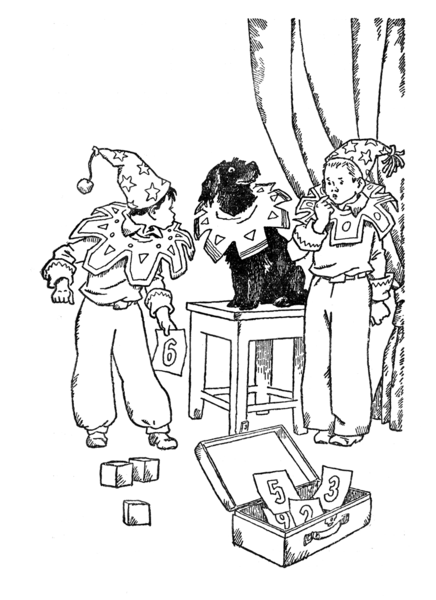
But when the thaw came, and ideological pressure fell significantly, Nosov, instead of following his fellow writers to rejoice in their freedom, writes two large programmatic ideological books - the “communist” story “Dunno in the Solar City” and “capitalist” novel-fairy tale "Dunno on the Moon."
This unexpected twist still baffles all researchers. Well, yes, this happens, but usually when the author’s creative powers decline. Therefore, they are trying to compensate for the decline in quality by relevance. But this cannot be attributed to Nosov with all desire - there is no need to talk about any decline in quality, and almost everyone considers Dunno on the Moon to be the peak of his work. The famous literary critic Lev Danilkin even declared him "one of the main novels of Russian literature of the XX century . " Not children's books, and not science fiction novels, but Russian literature as such - on a par with Silent Don and The Master and Margarita.
The trilogy about Dunno, this “fourth H” of the author, is really amazingly talented and surprisingly multi-layered, not without reason adults read it with no less pleasure than children.

Take even the hidden allusions, which are called postmodernism today, not much. Almost all Russian classical literature is hidden in Dunno. Bragging Dunno to the little ones: “ I built the ball, I have the most important one, and I wrote these poems ” - Khlestakov in its purest form, the wanderings of the policeman Svistulkin who witnessed the miracle committed by Dunno with the help of a magic wand, clearly send us to similar ordeals of Ivan Homeless in "The Master and Margarita." The gallery of characters can be continued: The Wizard with his “The Sun Shines Equally for All ” - the spitting image of Platon Karataev, the bare-chested comforter who is leaving for Foolish Island ( “Listen to me, brothers! No need to cry! .. We’ll be fed up - we will somehow live!” ) - obviously Gorky wanderer Luke.
A comparison of the appearance of Jading and Sprutts - Jading in its appearance was very reminiscent of Mr. Sprouts. The difference was that his face was slightly wider than that of Mr. Sprutts, and his nose was a little narrower. While Mr. Sprouts had very neat ears, Jading's ears were large and ridiculously sticking out to the sides, which further increased the width of the face. - again Gogol, his famous Ivan Ivanovich and Ivan Nikiforovich: Ivan Ivanovich is thin and tall; Ivan Nikiforovich is slightly lower, but it spreads in thickness. Ivan Ivanovich's head looks like a radish with its tail down; the head of Ivan Nikiforovich on a radish with his tail up.
Moreover, as one friend of mine noted, Nosov prophetically parody the classics, which then simply did not exist. Does this passage remind you of nothing?
The joker began to shake Svistulkin's shoulder. Finally Svistulkin woke up.
“How did you get here?” He asked, looking in bewilderment at the Joker and Korzhik, who were standing in front of him in their underwear.
- We? - joked confused. “Do you hear, Korzhik, it's like that ... that is, like that, if I weren’t joking.” He asks how we got here! No, we wanted to ask you how you got here?
- I? As always, ”Svistulkin shrugged.
- "As always"! - joked exclaimed. “In your opinion, where are you?”
- At home. Where else?
- That's the number, if I were not Joking! Listen, Korzhik, he says that he is at home. Where are you and I?
“Yes, really,” Korzhik intervened in the conversation. - And here we are, then, in your opinion, where?
“Well, and you are at my place.”
- Oh, you! Are you sure about that?
Svistulkin looked around and, in amazement, even got up on the bed.
“Listen,” he said finally, “how did I get here?”

Here, in fact, the word sounded that explains everything - "seerly."
Today's readers vying with admiration - how accurately Nosov described the capitalist society. Everything, down to the smallest detail. Here is the "black PR":
- And what. Society of giant plants can burst? - Wary Grizzle (newspaper editor - VN) and stirred his nose, as if sniffing at something.
“It should burst,” answered Krabs, emphasizing the word “should.”
“A must? ... Ah, a must!” - Grizzle smiled, and his upper teeth dug into his chin again. “Well, it will burst, if it should, I dare to assure you!” Ha ha! ... "
Here are the "werewolves in uniform":
“And who are these cops?” - asked Herring.
- Bandits! - said Spikelet with irritation.
- Honestly, bandits! In fact, the duty of the police is to protect the population from robbers, but in reality they protect only the rich. And the rich are the real robbers. They only rob us, hiding behind the laws that they themselves come up with. And what, tell me, is the difference, according to the law they will rob me or not according to the law? I do not care!".

Here is the “contemporary art":
“You better not look at this picture, brother,” Kozlik told him. - Do not break your brain in vain. There is still nothing to understand. We have all the artists paint like that, because the rich only buy such paintings. One paints such curls, the other depicts some incomprehensible squiggles, the third will pour liquid paint into the tub and grab it in the middle of the canvas, so that some awkward, meaningless stain results. You look at this spot and you can’t understand anything - it's just an abomination! And the rich watch and praise. “They say that we do not need the picture to be understandable. We do not want any artist to teach us anything there. The rich and without the artist understands everything, and the poor do not need to understand anything. That's why he is poor, so that he does not understand anything and live in the dark. ”
And even “credit slavery”:
- Then I entered the plant and began to earn decently. Even on a rainy day I started saving money, in that case, which means that if I suddenly become unemployed again. Only it was difficult, of course, to hold back so as not to spend money. And then they still began to say that I needed to buy a car. I say: why do I need a car? I can walk on foot. And they say to me: it’s a shame to walk on foot. Only the poor walk on foot. In addition, a car can be bought in installments. You will make a small cash contribution, get a car, and then you will pay a little each month, until all the money is paid. Well, I did so. Let, I think, everyone imagine that I am also a rich man. Paid the down payment, got a car. He sat down, drove off, and immediately fell into ka-ah-ah-ha-nava (Kozlik even began to stutter from excitement). Auto-aha-mobile broke, you know, broke his leg and four more ribs.
“Well, did you fix the car later?” Asked Dunno.
- What are you! While I was sick, they drove me out of work. And then it's time to pay a fee for the car. And I don’t have money! Well, they say to me: then give the car-aha-ha-mobile back. I say: go, take it in kaa ha khanava. They wanted to judge me for ruining the car, but they saw that there was still nothing to take from me, and they got rid of it. So I had no car, no money. "

The descriptions are so precise and detailed that involuntarily doubt creeps in - how could a person who lived his whole life behind the then impenetrable "iron curtain" to draw such a large-scale and impeccably executed canvas? Where did he get such detailed knowledge about the stock market game, brokers, "puffed" stocks and financial pyramids? Where did the rubber batons with built-in stun guns come from, after all, in those years they simply weren’t armed with the police - neither in Western countries, nor even in our country.
In order to at least somehow explain this, even a witty theory appeared, turning everything upside down. Say, the whole point is that the new society was built by people who received all their knowledge about capitalism from the Nosov novel. Here they are, at an unconscious level, and reproduced the realities that had settled in my head since childhood. Therefore, they say, it was not Nosov who described today's Russia, but Russia was built "according to Nosov."

But the hypothesis that Nosov was simply a prophet who had a vision of the future, and who tried to warn precisely those who were to live in this future - children, was much more logical. First, what will happen to their world. And then about how the new world will be.
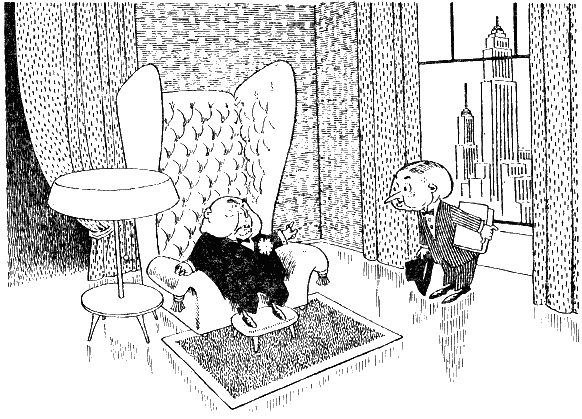
To justify it, we turn to the most important thing - the key idea of both books. What do you think, what is told in “Dunno in the Solar City”? About communism? About technical innovations like radio-controlled cars? Utopia, you say?
Yes, you remember the book, the plot, remember the plot! The book is by and large about how fragile, unprotected this built "society of justice" turned out to be. Remember donkeys turned into donkeys by people and the subsequent movement of “carriages” fatal for the city?
After all, what do we have? There is quite a happy and, apparently, quite closed society (remember how enthusiastic the aliens are there, who are literally torn by the hospitable hosts). But the slightest push from the outside is fatal, the virus introduced from the outside affects the whole organism, everything collapses, and not by trifles, but to the bottom.
New-fashioned trends that appeared not without the help of aliens plunged this society into complete anarchy, and only dumbfounded police officers (remember our "cops" who never took guns on duty) helplessly watch the riot of social elements. Hello nineties!

Nosov, of course, is a good storyteller, so he could not finish on such a pessimistic note. But it is significant that even he, in order to save the Sunny City, had to pull the piano out of the bushes, call on the “god from the car” - the Wizard, who came and performed a miracle.

And “Dunno on the Moon” - is it really about a capitalist society? The book is about two happy “domestic puppies” who suddenly found themselves on the street in an animal pack. Someone, like Donut, adapted, someone, like Dunno, collapsed to the bottom. In a word, as it is correctly said in the collection of articles “Cheerful little men. Cultural heroes of Soviet childhood ”: “ Reading the book “Dunno on the Moon” in the 2000s is fraught with “subtraction” in the text of the meanings that Nosov, who died in 1976, could not put into it in any way. This fairy tale resembles an inadvertent description of the self-awareness of those residents of the USSR who in 1991 woke up like on the Moon: they had to survive in a situation where what seemed to be an unprecedented Kolokolchikov street remained in the distant past - along with its supposedly eternal time ... ”
However, the former residents of the Flower City understand everything. And on the day of the centenary of their beloved writer they write in their blogs: “Thank you, Nikolai Nikolaevich, for the prophecy. And although we were not in the Sunny city as we should, but on the Moon, we send you our love, gratitude and admiration from it. Everything here is exactly as you described. Most have already passed through Wacky Island and are peacefully bleating. The minority hopes longing for a rescue ship with Znayka at the head. He, of course, will not arrive, but they are waiting . ”
